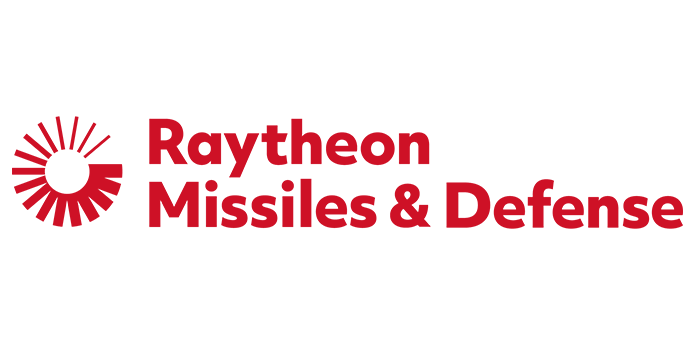Events
-
No available events.
-
No Virtual event found.
-
No In-Person event found.
-
Trusted AI and Autonomy Forum
September 12th, 2023
Breakthrough advancements in artificial intelligence have propelled the field to new heights. AI is being harnessed across government, industry and military branches alike to support and advance missions in a myriad of applications. But as a still relatively nascent technology, AI also comes with inherent risks, threats and vulnerabilities — as evidenced by the rapid development of generative AI tools and technologies in recent years.The...
-
Space Technologies Forum
August 29th, 2023
As the newest and fastest growing warfighting domain, space is rising to the forefront of our nation’s priorities as we work to maintain technological superiority on the global stage. Among the most critical capabilities being targeted in this domain today is real-time, continuous connectivity, especially as adversarial activity and threats increase. This timely event focuses on the cutting-edge technologies behind rapid progress in space, the...
-
Army Acquisition Priorities: Balancing Readiness and Modernization Forum
November 8th, 2023
To prepare for the future fight, the U.S. Army is prioritizing modernization and acquisition at speed. Emerging conflicts and increased demand for weapons systems and warfighter capabilities in the past year have underscored the growing need for resilient supply chains and the ability to rapidly field advanced technologies.Army leaders are looking at ways to shorten purchasing timelines and deploy digital engineering technologies as they reimagine...
-
2023 Hypersonics Forum
August 15th, 2023
The race to develop hypersonic weapons is heating up, but the United States is trailing behind some of its key competitors in this critical area. With the ability to travel five times the speed of sound and a range far exceeding that of current long-range weapons, hypersonics are becoming the weapons of the future fight, especially in light of complex geopolitical situations and the rise...
-
2023 Microelectronics Forum
July 25th, 2023
Microelectronics – or tiny, complex circuits, machines and components – have been identified as one of the Department of Defense’s critical and emerging technologies that are vital to the United States’ national security. Serving as the “brain” behind electronic systems, microelectronics power commercial and military systems and enable nearly all Defense Department activities.However, the country’s current reliance on foreign manufacturers is proving to be risky...
-
2023 Defense Software Modernization Forum
June 7th, 2023
Software has become foundational for weapons systems, warfighter capabilities, global defense power and ultimately — our nation’s ability to deliver a more lethal force. In order to achieve this, we have to be faster and more agile than our adversaries. The Department of Defense released its first ever software modernization strategy in February 2022, and Pentagon officials are now exploring options and finalizing plans for...
-
5G Forum
April 25th, 2023
Since its global deployment in 2019, 5G has paved the way for monumental innovations in communications networks across the public and private sectors. 5G’s faster connection speeds, higher bandwidth and lower latency have facilitated advancements in a myriad of sectors and applications, including within the U.S. military.Now, 6G and NextG are on the horizon, promising even further network progress, market transformation and improved communications capabilities...
-
2023 Quantum Technologies Forum
April 5th, 2023
The world is on the cusp of the second quantum revolution as scientists and quantum leaders inch closer toward fully developed quantum capabilities. This second generation of quantum could have enormous impact in multiple areas including warfare, supply chain optimization, artificial intelligence, machine learning, cybersecurity and much more.Quantum technology research and development efforts for defense and national security uses have been accelerating across the public...
-
Cloud Security Forum
March 22nd, 2023
Cloud is undoubtedly one of the fastest growing technologies across both the public and private sector. With real-time availability of data storage, computing power and IT resources, the cloud has become an essential component of many federal agencies’ information environments.However, cloud is not without risk, and cloud security can’t be overlooked. Organizations must leverage zero trust, cyber hygiene procedures and advanced technologies to address both...
-
Homeland Security Forum
February 7th, 2023
As the global geopolitical and technological landscapes change, the United States continues to face new and emerging threats to homeland security. The U.S. government’s Department of Homeland Security is tasked with hardening security for threats on the horizon, enabling the nation to withstand attacks and ensuring the country’s ability to rapidly recover. The scope of DHS’ mission encompasses everything from natural disasters to counterterrorism and...
-
Electronic Warfare Forum
January 19th, 2023
With the rise of electronic warfare, or EW, the battle for control of the electromagnetic spectrum is intensifying. The electromagnetic spectrum and directed energy can be used in military applications to detect, disrupt and deceive adversarial forces while protecting U.S. and allied forces. These tactics can target communication systems, radar and other military and civilian systems that rely on the electromagnetic spectrum. In recent years,...
-
Information Warfare Forum
March 15th, 2023
With the rapid evolution of information technologies, cyberspace and intelligence capabilities, we are at the apex of the Information Age. As evidenced by the 2022 Russian invasion of Ukraine, information and intelligence are now critical components of modern warfare, and global powers are racing to achieve information dominance. Information warfare, or the use of information and communications technologies to achieve strategic dominance over an adversary, is...
-
Sensors for Defense Forum
October 13th, 2022
In today’s combatant environment, sensors have become an integral component of nearly all military weapons, vehicles, operations and systems. The U.S. military’s situational domain awareness, detection, and deterrence capabilities all rely on data collected from sensors, bringing sensing technology to the forefront of the Pentagon’s priorities.However, the exponential growth of information sources, sensors and data creates challenges and opportunities for decision making during high-impact events....
-
CTO Forum
October 6th, 2022
The proliferation of next-generation, innovative technology across the global playing field in recent years has increased dramatically. From space to defense to intelligence — and every market and domain in between — advanced technologies are impacting critical missions and augmenting the United States’ capabilities every day in new ways.Now, chief technology officers and other top leaders in government and industry are harnessing these advancements at...
-
Hypersonics Forum
July 12th, 2022
The U.S. and our allies are facing an immediate and evolving threat from adversaries who are actively developing and deploying higher-tech offensive weapon capabilities than ever before. Consequently, advanced hypersonic weapons and vehicles have emerged as some of the highest priorities for defense agencies and military branches as the nation works to combat significant adversarial pacing threats, bolster deterrence power and remain at the forefront...
-
Integrated Network Systems-of-Systems Technology Forum
August 4th, 2022
In today’s geopolitical environment, the need for secure, reliable, real-time information dissemination is critical. As information warfare and gray zone tactics become more prevalent, the U.S. must push rapid command, control and communication modernization efforts to increase situational awareness, accelerate decision making capabilities and stay one step ahead of our adversaries. The Department of Defense is targeting integrated network systems-of-systems technology to optimize and synchronize...
-
Microelectronics Forum
June 14th, 2022
Microelectronics – or tiny, complex circuits, machines and components – have been identified as one of the Department of Defense’s critical and emerging technologies that are vital to the United States’ national security. Serving as the “brain” behind electronic systems, microelectronics power commercial and military systems and enable nearly all Defense Department activities, according to Under Secretary of Defense for Research and Engineering, Heidi Shyu.However,...
-
Defense Software Modernization Forum
May 17th, 2022
Transformational changes are on the horizon within the Department of Defense as the Pentagon sets its sights on software as a top priority for the enterprise. In February 2022, Deputy Defense Secretary Kathleen Hicks released a new software modernization strategy that promises to usher in a new era of speed and adaptability for the Defense Department as it increasingly relies on software-based capabilities to sustain...
-
Quantum Technologies Forum
July 28th, 2022
With a more comprehensive understanding of complex quantum phenomena, we’re on the precipice of the second quantum revolution, which has the potential to produce revolutionary quantum technologies with invaluable uses across civilian, military and government missions.This second generation of quantum is expected to have transformational applications in multiple areas including warfare, supply chain optimization, artificial intelligence, machine learning, cybersecurity, drug discovery and command and control...
-
Digital Twins Forum
April 14th, 2022
Identified as one of the top five tech trends of 2021, digital twins are expected to experience significant growth in the coming years as the technology expands its footprint. With benefits including enhanced systems maintenance, lower risk to physical assets and improved decision-making capabilities, digital twins are rapidly gaining traction across federal, commercial and defense sectors.Join ExecutiveBiz Events for the platform’s Digital Twins Forum, which...
-
Applying AI to Data for Cyber Hygiene and National Security Forum
March 10th, 2022
Government agencies are working to integrate advanced artificial intelligence and machine learning technology into their critical infrastructures to combat the increasing frequency and severity of cybersecurity threats.With capabilities like rapid data collection and processing, as well as enhanced real-time visibility and analysis for cyber defense, AI/ML can help organizations perform critical investigations, quickly identify potential vulnerabilities and glean insights from collected data while complying with...
-
Dual-Use Technology in Space Defense Forum
February 15th, 2022
Dual-Use Technology in Space Defense ForumThe United States Space Force and private sector organizations are examining how to support a viable industrial base in the space domain through dual-use technology that has both military and commercial utility as global competition escalates.The intelligence community, Department of Defense and other federal agencies are looking to leverage AI/ML and commercial geospatial intelligence resources, including satellite clusters equipped with...
-
Supply Chain Cybersecurity: Revelations and Innovations
October 26th, 2021
In 2020, Solarwinds was the victim of an unprecedented cyber hack that affected a multitude of private companies and public agencies by accessing private information and exposing customers. This breach has socioeconomic and political overtones as governments and organizations grapple with the immediate effects and long term implications. Cybersecurity companies and experts around the world are hard at work to prevent these types of supply...
-
How to Win Government Contracts with Joshua Frank, Amazon's Number One Best Selling Author
August 26th, 2021
Hear from Joshua Frank, Award-winning business coach, professional speaker, bestselling author, and nationally recognized authority on government sales and business acceleration. With 30 years in the government market, he speaks nationally on federal acquisition and business strategy. Join Executive Biz in conversation with Mr. Joshua Frank as he discusses his many successes, tips for government contractors, and his acclaimed books, “An Insider's Guide to Winning...











































































